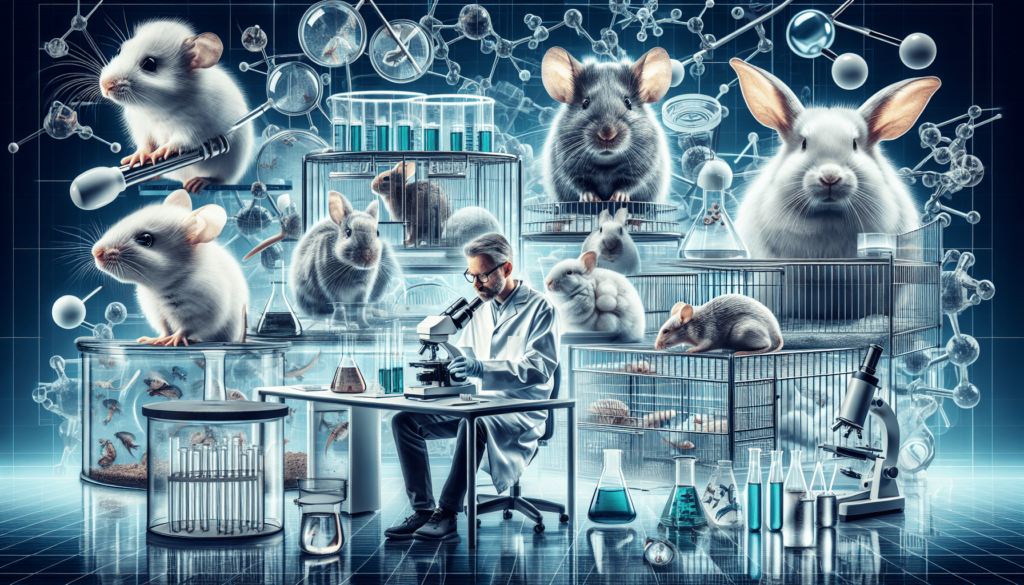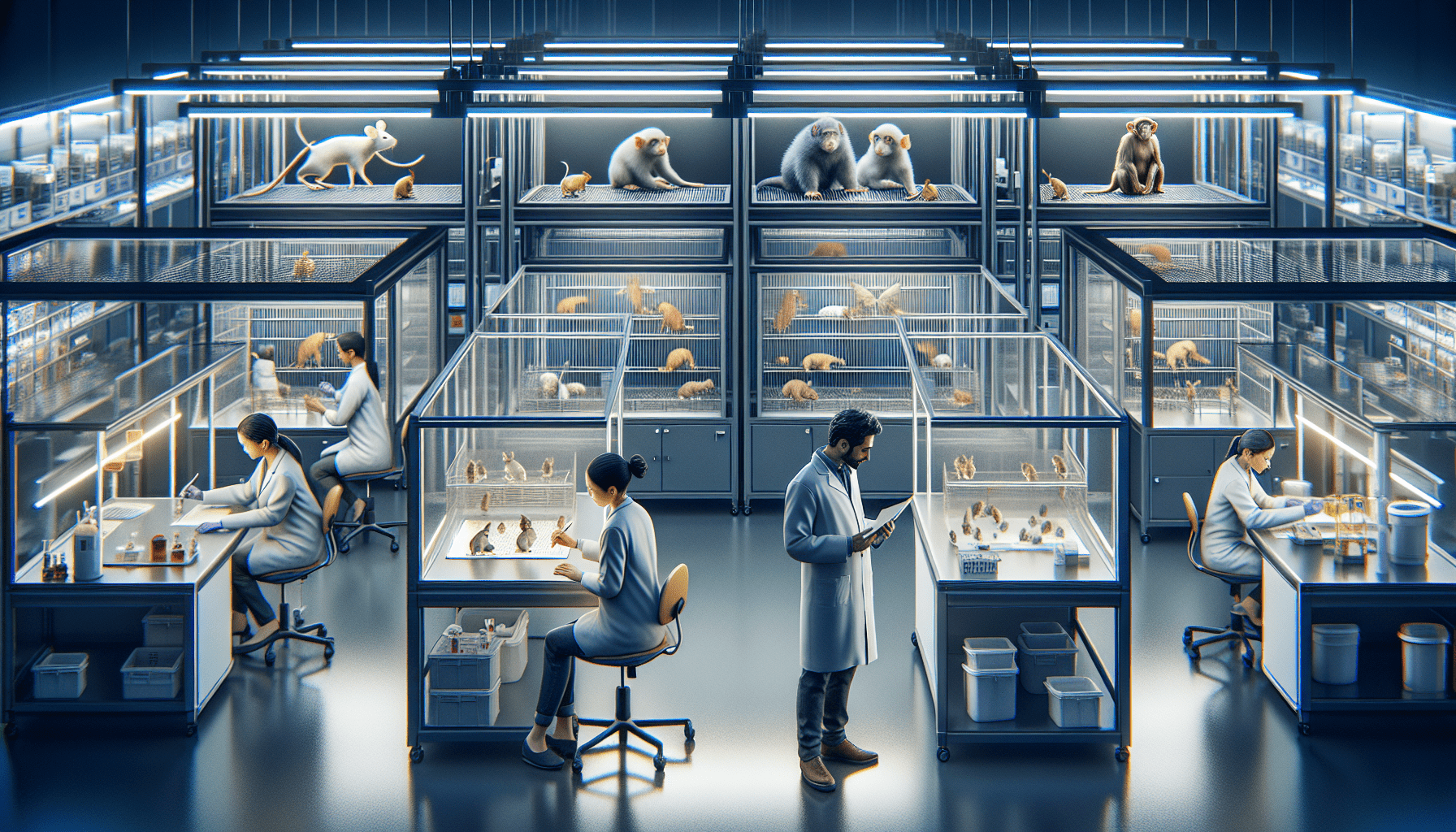Are you curious about the important role animals play in scientific research? In this article, we will explore how animals have contributed to advancements in various fields of science. From discovering new treatments for diseases to studying the intricacies of behavior, animals have been vital partners in scientific journeys. Join us as we delve into the fascinating world of animal research and uncover the significant impact they have had on scientific progress.
Overview
Scientific research has played a crucial role in advancing our understanding of various diseases and developing life-saving treatments. Animals have been an integral part of this research, contributing significantly to our knowledge and progress in biomedical research, drug development, and disease understanding. However, the use of animals in scientific research raises ethical considerations that need to be carefully addressed.
Historical significance
The use of animals in scientific research dates back to ancient times, with early civilizations observing and experimenting on animals to gain insights into the workings of the human body. Throughout history, animals have been instrumental in numerous scientific breakthroughs, such as the discovery of insulin and development of vaccines. Their contributions have shaped medical advancements and human health outcomes.
Current importance
In the modern era, animals remain indispensable to scientific research. Their use continues to play a vital role in advancing medical knowledge, developing new drugs, and improving disease treatment and prevention strategies. Animal research has helped unravel intricate biological processes, understand complex diseases, and test new therapeutic interventions, ultimately benefiting both human and animal health.
Ethical considerations
While the use of animals in scientific research has undoubtedly led to significant advancements, it is not without ethical concerns. The welfare and treatment of animals involved in research must be carefully considered and regulated. Striking a balance between scientific progress and ethical considerations is essential to ensure the responsible and humane use of animals in research. Strides have been made to implement animal welfare regulations and establish ethical review boards to oversee animal research protocols, ensuring the rights and welfare of animals are protected.
Purpose of Animals in Research
Animals serve a crucial purpose in scientific research, particularly in the fields of biomedical research, drug development, and disease understanding.
Biomedical research
Animals are essential in biomedical research to investigate disease mechanisms, evaluate treatment effectiveness, and develop potential therapies. By studying diseases in animals, researchers can gain insights into the underlying biological processes, allow for the testing of new drugs and therapies, and assess their safety and efficacy before human trials.
Drug development
The development of new drugs relies heavily on animal studies. Animals serve as models for testing the safety and efficacy of potential drugs, helping researchers understand the pharmacokinetics and toxicology of compounds. Animal studies provide valuable preclinical data that informs the decision-making process before moving on to human trials, which increases the chances of successful drug development.
Disease understanding
Animals are used to study various diseases, including cancer, neurological disorders, and infectious diseases. By replicating disease conditions in animals, researchers can explore disease progression, identify potential biomarkers, and test novel treatment approaches. This understanding can then be translated into better diagnostics, prevention strategies, and therapeutic interventions for both humans and animals.

Animal Models
The use of animal models is a critical aspect of scientific research, allowing for controlled experimentation and the study of physiological and pathological processes in living organisms.
Importance of animal models
Animal models provide researchers with an opportunity to simulate human disease conditions in controlled environments. These models allow for the investigation of complex biological interactions, the study of disease progression, and the evaluation of potential treatment options. Animal models also provide a bridge between basic research and clinical practice, facilitating the translational process from the bench to the bedside.
Different types of animal models
There are various types of animal models used in scientific research, each tailored to address specific research questions and limitations. These include rodents like mice and rats, non-human primates, zebrafish, and pigs. Each model has its own advantages and disadvantages, with researchers selecting the most appropriate animal model based on the specific research objectives and requirements.
Advantages of Animal Models
Animal models offer several advantages that make them invaluable to scientific research.
Similarities to humans
While animals differ from humans in many aspects, they share fundamental biological similarities that allow for meaningful research findings. The genetic makeup, physiological processes, and organ systems of animals exhibit similarities to humans, making them valuable models for understanding human diseases and developing potential treatments.
Shorter lifespan
Compared to humans, animals have a shorter lifespan, enabling researchers to study disease progression and evaluate treatment outcomes more quickly. This accelerated timeline allows for a more efficient evaluation of potential therapeutic interventions and expedites the translation of research findings into clinical practice.
Controlled environments
Animal research allows for the control of environmental factors, genetic background, and other variables, providing researchers with a controlled setting to conduct experiments. This control minimizes confounding factors and enhances the reliability and reproducibility of the research findings, leading to more accurate conclusions and better-informed decisions.

Disadvantages of Animal Models
Despite their usefulness, animal models also present limitations and challenges in scientific research.
Differences from humans
One significant drawback of animal models is that they do not fully replicate the complexities of human physiology and pathophysiology. Differences in organ systems, metabolism, genetic makeup, and immune responses can limit the generalizability of research findings to humans. Thus, the translation of results from animal models to human applications may not always be straightforward.
Ethical concerns
The use of animal models raises ethical concerns regarding the treatment and welfare of animals involved in research. It is essential to address these concerns by implementing regulations, ethical guidelines, and practices that minimize animal suffering and ensure their well-being is prioritized throughout the research process.
Limitations in translation
Another limitation of animal models is the potential difficulty in translating research findings to human applications. Despite their similarities, there are unique aspects of human biology and genetics that cannot be fully captured in animal models. Therefore, caution must be exercised when extrapolating animal study results to human treatment and therapies.
Regulations and Ethical Considerations
To ensure the responsible and ethical use of animals in scientific research, several regulations and ethical considerations are in place.
Animal welfare regulations
Most countries have regulations in place to protect the welfare of animals used in research. These regulations outline standards for animal housing, care, and the humane management of research animals. Compliance with these regulations is essential to minimize animal suffering and ensure their well-being throughout the research process.
Ethical review boards
Ethical review boards, also known as institutional animal care and use committees, play a crucial role in overseeing animal research protocols. These independent committees assess the ethical implications of proposed research involving animals and ensure compliance with relevant regulations and guidelines. The involvement of ethical review boards helps ensure that the scientific goals are aligned with ethical considerations, thereby upholding the welfare of the animals involved.
Alternatives to animal testing
Efforts are being made to develop and promote alternatives to animal testing in scientific research. These alternatives include in vitro studies using human cells and tissues, computer simulations, and organ-on-a-chip technology. These methods aim to refine, reduce, and replace the use of animals in research while still providing reliable and relevant scientific data.
Current Applications of Animal research
Animal research has made significant contributions to various fields of scientific inquiry, including cancer research, neuroscience, and the study of infectious diseases.
Cancer research
Animal models have played a crucial role in advancing cancer research by allowing scientists to study tumor initiation, progression, and response to therapies. These models enable the evaluation of promising drug candidates, investigation of treatment resistance mechanisms, and identification of potential biomarkers for early detection and targeted therapies.
Neuroscience research
Understanding complex neurological disorders relies heavily on animal models. By studying animal models, researchers can analyze brain function, study neurodevelopmental processes, investigate the underlying causes of neurological disorders, and evaluate potential therapeutic interventions. Animal models continue to be instrumental in advancing our knowledge of conditions such as Alzheimer’s disease, Parkinson’s disease, and multiple sclerosis.
Infectious disease research
Animal models have significantly contributed to our understanding of infectious diseases and the development of treatments and preventive strategies. By studying animal models, researchers can investigate disease transmission, study the immune response to infections, and assess the efficacy of potential vaccines and therapeutics. Animal research has played a critical role in combating diseases such as HIV/AIDS, malaria, and influenza.
Alternative Research Methods
Efforts are underway to develop and promote alternative research methods that reduce or replace the use of animals in scientific research.
In vitro studies
In vitro studies involve conducting experiments using isolated cells, tissues, or organs outside the living organism. These studies allow for the observation and analysis of biological processes under controlled conditions. In vitro methods often use human cells or tissues, providing a more direct representation of human biology and reducing the need for animal models.
Computer simulations
Advancements in computational models and simulations are increasingly being utilized in scientific research. Computer simulations allow researchers to model and predict complex biological processes, simulate drug interactions, and analyze large datasets. These simulations provide valuable insights into disease mechanisms, therapeutic targets, and potential treatment effectiveness.
Organ-on-a-chip technology
Organ-on-a-chip technology aims to replicate the structure and function of human organs using microfluidic systems. These models mimic the physiological environment of organs, allowing for the study of disease processes, drug metabolism, and potential toxicity. Organ-on-a-chip technology shows promise in reducing the need for animal models, providing more accurate and relevant data for research purposes.
Future Directions
Advancements in technology and the growing focus on ethics and animal welfare are shaping the future of scientific research involving animals.
Advancements in technology
Emerging technologies such as gene editing, genome sequencing, and high-throughput screening methods hold immense potential for scientific research. These technologies allow for more precise and targeted investigations, enabling researchers to gain a deeper understanding of biological processes. Advancements in technology will continue to enhance our ability to conduct research, reducing the reliance on animal models while still obtaining reliable and relevant data.
Reducing animal usage
Efforts are being made to refine, reduce, and replace the use of animals in scientific research. The implementation of alternative research methods, as well as the increased focus on in vitro studies and computer simulations, can significantly reduce the number of animals used in research. Refinement of experimental protocols and the promotion of the 3Rs (Replacement, Reduction, Refinement) framework help ensure that research involving animals is conducted with minimal harm and optimal efficiency.
Increased focus on alternatives
The scientific community is increasingly recognizing the importance of exploring alternative research methods that minimize or eliminate the use of animals. Increased support and funding for research on in vitro models, computer simulations, and organ-on-a-chip technology are driving the development and adoption of alternative research methods. This shift in focus reflects the growing commitment to ethical considerations and the desire to refine and improve scientific research practices.
Conclusion
The role of animals in scientific research has been historically significant and continues to be of great importance today. Animals have played a vital role in advancing medical knowledge, developing life-saving treatments, and improving disease understanding. The responsible and ethical use of animals in research is crucial for maintaining scientific progress while ensuring the welfare and protection of animals. As technology advances and alternative research methods become more prevalent, the scientific community must continue to strike a balance between scientific progress and ethical considerations, recognizing that the contributions of animals to scientific research cannot be easily replaced.

